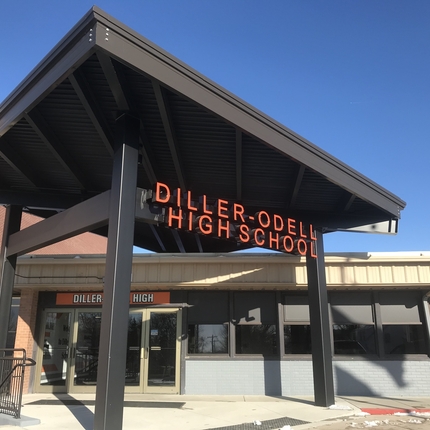By Trenton Buhr, former staff member
Like most rural schools in Nebraska, Diller-Odell Public Schools faces an imbalanced funding stream caused by a complex property tax and school funding system.
While no school is the same, Diller-Odell, located on the Jefferson-Gage County line along the Kansas border, shows the tumultuous times rural schools and the agriculture economy have faced in recent years. With little state funding, the district is reliant on local property taxes and, because of a recent spike in land valuations, most of the burden is on area farmers.
In recent years, the revenue generated through property taxes and funding from the state hasn’t been enough to cover costs. For school districts in this situation, taking drastic measures, such as staff and program reductions, may be the only option, but without these vital elements, educational quality could suffer.
Diller-Odell has seen hard times like this before. Throughout most of the early 21st century, the first decade of Diller-Odell’s merger, the budget was on a thin rope. Repairs were neglected and staffing was kept low. At that time, the district’s voters approved an override of the maximum tax levy, allowing the district to meet its funding needs.
After the installation of a pipeline through the district, followed by the development of a wind farm and an increase in agriculture land values, the district was finally able to lower its levy. Better financial times also meant needed repairs and program advancements could finally happen, which is good for the future of the district.
“We want the school to stay relevant,” said Superintendent Mike Meyerle. “While we could survive without as many teachers or facilities, a good education keeps students and families here.”
Today, the district is not levying near the maximum amount, which has kept a positive local attitude and a feeling of financial stability. Recently, the district built a new weight room that is open to community members and a new gymnasium after a special building levy designated toward these projects was established.
Although property taxes are weighted heavier on farmers and ranchers, a smaller school district is less costly overall.
“If Diller-Odell were to close, most of the property would go to neighboring school districts where their levy would actually increase,” Mike said.
The current system of school funding often puts districts in a tough spot between the struggling agriculture economy and the need to have a modern school. But, certain expenses, such as building repairs and special education, cannot be avoided and while repair projects can be postponed, they can’t wait forever.
With a ballot initiative looming for late 2020, the Legislature is in a pinch. Without a solution this year, the future of state and school funding will be uncertain.





